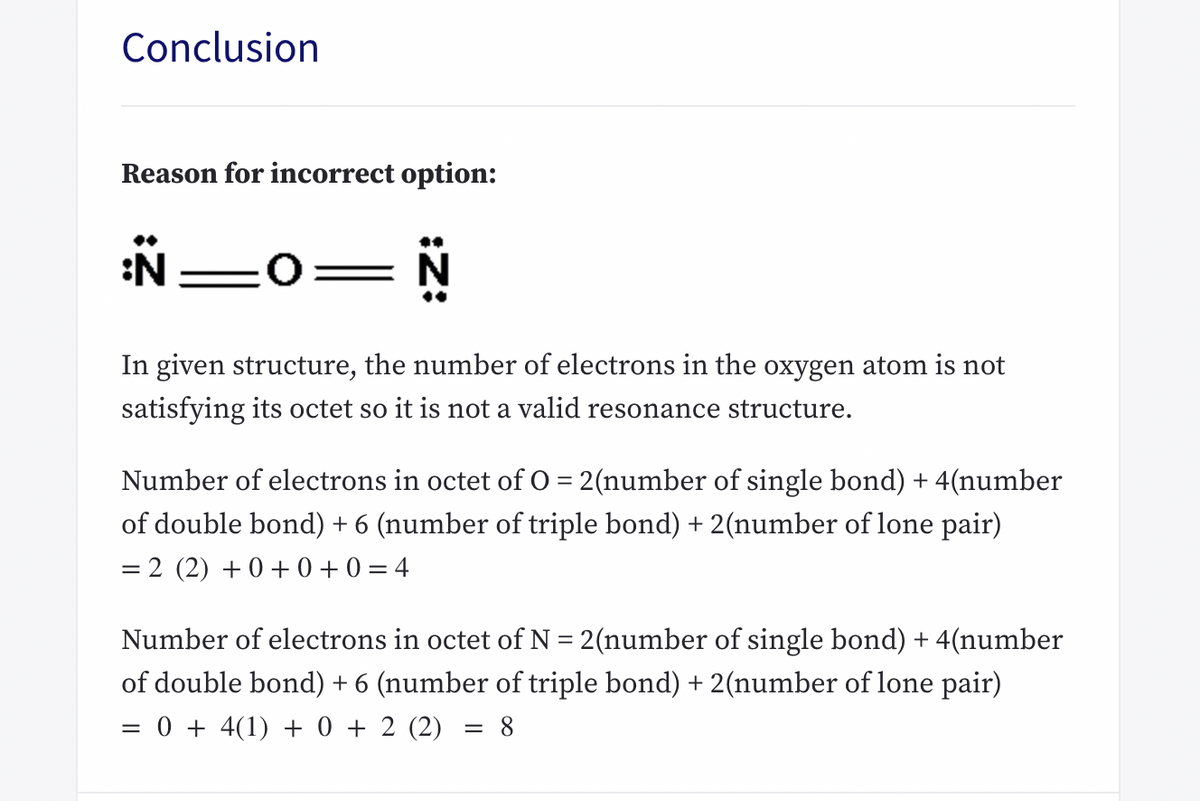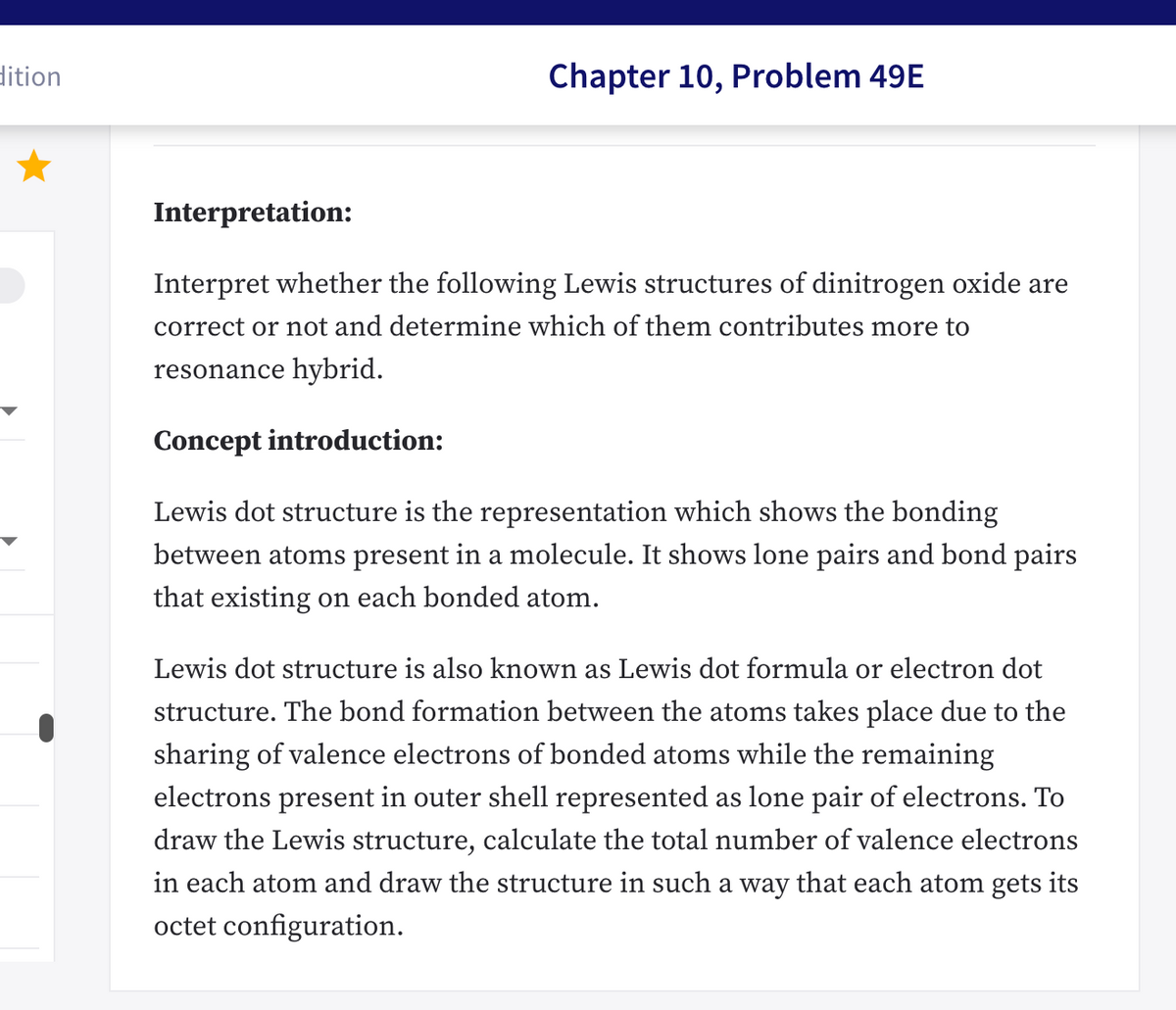In problem 49, in chapter 10 of general chemistry principles and modern applications eleventh addition, it states in the solution explanation that d is invalid because O does not complete the octet rule as it only has 2 single bonds, meaning there would be 4 electrons in its octet, however oxygen is connected to each Nitrogen through a double bond and thus has 2 double bonds which would fufill its octet. While I agree the resonance structure is invalid as the element placement in rsonance structures have to emulate that of its lewis structure, I am confused why this explanation says that oxygen does not fufill the octet when it appears to me that it does.
Formal Charges
Formal charges have an important role in organic chemistry since this concept helps us to know whether an atom in a molecule is neutral/bears a positive or negative charge. Even if some molecules are neutral, the atoms within that molecule need not be neutral atoms.
Polarity Of Water
In simple chemical terms, polarity refers to the separation of charges in a chemical species leading into formation of two polar ends which are positively charged end and negatively charged end. Polarity in any molecule occurs due to the differences in the electronegativities of the bonded atoms. Water, as we all know has two hydrogen atoms bonded to an oxygen atom. As oxygen is more electronegative than hydrogen thus, there exists polarity in the bonds which is why water is known as a polar solvent.
Valence Bond Theory Vbt
Valence bond theory (VBT) in simple terms explains how individual atomic orbitals with an unpaired electron each, come close to each other and overlap to form a molecular orbital giving a covalent bond. It gives a quantum mechanical approach to the formation of covalent bonds with the help of wavefunctions using attractive and repulsive energies when two atoms are brought from infinity to their internuclear distance.
In problem 49, in chapter 10 of general chemistry principles and modern applications eleventh addition, it states in the solution explanation that d is invalid because O does not complete the octet rule as it only has 2 single bonds, meaning there would be 4 electrons in its octet, however oxygen is connected to each Nitrogen through a double bond and thus has 2 double bonds which would fufill its octet. While I agree the resonance structure is invalid as the element placement in rsonance structures have to emulate that of its lewis structure, I am confused why this explanation says that oxygen does not fufill the octet when it appears to me that it does.


Step by step
Solved in 2 steps with 1 images




